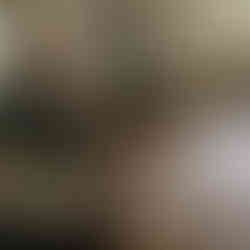A Moment with Sophie
- alisatanakaking
- Feb 25, 2016
- 4 min read
I have been interested in Sophie Calle’s arts practice since being introduced to her work in 2012, and by pure coincidence, she currently has an exhibition on in Nagasaki, so I decided to make a day trip to see some of her work in person.
I started by taking the tram up to the famous Glover Gardens which sits high above the city, overlooking the port. I didn't know that Nagasaki was quite so hilly. The city is built on top of itself, surrounding the harbor, stretching high up the cliff faces. Glover Gardens is the old estate of one of the richest and most successful western merchants who arrived in Nagasaki from Scotland.
What I found most interesting about the place, was not its history, but rather how impressed the Japanese people are by it.
Yes, it is a an impressively large estate.
Yes, it has an excellent view of the city.
Yes, it has quite a beautiful garden.
But compared to Japanese temple gardens, or grand country gardens that I've visited in Australia or Europe, it really wasn't anything special. I had heard rave reviews about how stunning the gardens were, but it lacked the pristine mapping of Versaille, the zen sensibility of Japanese gardens, the lush, fresh, vibrance of the botanic gardens back home. Perhaps I am spoilt for choice, but I have seen many many more beautiful gardens and parks throughout Japan that I could spend days in. I must be immune to the allure of the ‘foriegn’ novelty.
The walk from the garden back down to the city centre is really fun. A narrow winding street lined with tiny shops selling cakes and souvenirs has a hidden gem about half way down. A small museum gallery is unobtrusively tucked behind a garden of its own in an old stone building.
This museum is entirely dedicated to picture books.
The first floor is the shop - the short of shop that is perfectly designed for you to spend hours in, browsing the shelves and discovering hidden treasures.
The second and third floors are beautiful gallery spaces, small but well realised, showing temporary exhibitions of original illustrations. On the third level there is also a reading space where you can enjoy a small library of children's books at your leisure.
I've never come across a shop and gallery dedicated solely to picture books before. I wonder if there are others, as this one had a constant stream of people coming through (all adults) experiencing varying levels of nostalgia, re-discovery and magical wonder.
To contrast the rather rustic nature of the picture book museum, I headed towards the Nagasaki Prefectural Art Gallery to visit Sophie Calle. The art gallery is a slick, modern building, cleverly built to straddle the river. One half of the building is for temporary special exhibitions, the other half for the permanent collection and shop.
I feel like not many Japanese people know Sophie Calle’s work, as there were only two other people visiting the exhibition at the same time, which made for perfecting viewing.
Sophie Calle is a story collector.
She gathers people’s stories, arranges them and frames them, sitting them alongside each other and presenting them to the audience with admirable restraint and simpicity, so that the hero of the work is the story itself.
The exhibition in Nagaski was entitled ‘For the First and Last time’.
The first room you entered had portrait photographs of people who had been born blind. Accompanying the photos, were one or two line quotes from each of the people describing beauty, and beautiful things.
The next room held similar photographic portraits, but this time of people who had lost their sight. Accompanying these photographs, was a short quote describing the last thing that they had ever seen.
All the photographs were framed and hung simply, but with great precision. Such simplicity allows no room for error.
In the third room, 5 videos were projected.
Each of these videos were shot in the same place and manner, over the shoulder of a person standing looking out at the sea. The work films the reactions of people who have never seen the sea before, and are seeing it for the first time as adults. The formula is simple, in a reasonably tight frame, the people are filmed individually, first from behind as they watch the ocean, they turn around to face the camera. All that can be heard is the sound of lapping waves.
That is all that is needed - the pure simplicity of it allows for the untold stories to speak, and leaves us with endless questions about who these people are, and our own relationship to sight and the sea.
As you leave the exhibition space, the high ceilings and monstrous white walls, the sound of sea continues to ring out. And as you turn the corner away from the work and into the light, the first thing you see through the massive windows, is Nagasaki Port - laid out beneath you, the sea blue as blue, extending out the mountains and beyond.



















Comments